SID Chip Club
An In-Depth Discussion About the Album and About the LMan Behind It
by LaLa
Published: 10/17/2020
After a highly successful Kickstarter LMan has published a new album called SID Chip Club
earlier this year. Even though technically it's not a remix album, I thought that the story of how the album was made is still very interesting - and this also gave me an excuse to try to get to know the man behind it all.
Markus, to say that you are multitalented would be a serious understatement. Many people on this site (Remix64) obviously know you as one of the founders of it, and still the driving force behind it. But in addition to being a webmaster, you are also a phenomenal graphic artist (both in the digital and the analog world), you are a coder, and you are also a prolific musician in multiple genres and formats - be it SID, remixes, or albums released on Bandcamp. In fact, you are also a current member of such illustrious groups as Maniacs of Noise, Censor Design, MultiStyle Labs and TRSI, among others. And now thanks to a successful Kickstarter that exceeded its original goal by over 30% you also have a new album out called SID Chip Club
, which was officially published on June 25, 2020. Although it's not a remix album - all the tracks on it are your original compositions - I think the story behind it is still an interesting one that I think many readers of Remix64 would appreciate. I am also going to use this opportunity to ask you about not just this album, but about LMan in general. So, let's dig into it!
First off, what were you hoping to achieve with SID Chip Club
? What was your primary motivation for it?
SID Chip Clubvinyl album by LMan - click to play full album
Hey, LaLa, thank you; I'll gladly provide some insights. Back in 2018, SID Spieler (aka Christian Zauner) asked me if I wanted to contribute a SID to the C64 Vinyl Tribute compilation he was putting together along with great SID musicians, from the top of my head like Jammer, Linus, C0zmo, Taxim, Toggle, Anthony W and others. I gladly agreed and submitted my techno track Mo's Techno Logy
, which I had just finished.
When the record was released, and a single share of the vinyl project and Mo's Techno Logy on Facebook helped nearly sell it out, I felt the time was right to do a full album on my own. Besides, releasing a techno vinyl was a long held dream ever since my clubbing days in the 90s.
The SID
in the title of the album is not just geek-bait: every track on this album was actually played on and recorded from a fully functioning Commodore-64. In fact, the entire album was also published as a C64 music disk. Can you tell us about the process of how the individual tracks were put together?
I'll start with a little history. In 2008, THCM together with SounDemoN and Mixer, released a demo called Vicious Sid
at X'2008. It contained a groundbreaking new method for sample playback. SounDemoN had researched a trick to offset one of the SID's oscillators at any voltage, so a sample could be played back on a regular SID voice instead of the long established method of offsetting the volume register. That, combined with THCM's MOD converter (today named THCMod) which could play back Protracker files on the C64, opened up many new possibilities!
Along with a few drawbacks, the major advantages of the new tech were:
- Samples were clearly audible on the 8580 chip
- Samples could be played back with approx. 8 bit precision
- Because the sample was played on a regular SID oscillator, you could apply the filter to it
- You still had 2 SID voices left to accompany the sample track
Another example was the tune Fanta In Space
, released at the same time. I surely remember how my jaw dropped when I first heard the filtered goodness.
Fanta in Spaceby Fanta
After entering the active C64 demoscene in 2015 and joining MultiStyle Labs, Jammer introduced me to THCM and the tool, after I had expressed admiration of the filtered section of his track Still Floateeing
. Uwe and I had instant chemistry, and inspired by the aforementioned track I contrived a technique to use the THCMod tool with a new approach: by consequently applying the low-pass filter on the sample parts, and compensating for the resulting loss of fidelity with accents and overlays from the SID channels, I created a previously unheard-of hybrid soundscape with my track Hi Fi Sky
.
Since then, we had various successful releases with MultiStyle Labs in the scene, like our music disk Modern Love Classics
, or my track Rastaline Dub
, which won the X'2016 music competition.
Rastaline Dub
used a new real-time echo effect THCM had coded. After that we were toying with ideas about how to improve the engine, together we conceptualised a loop-machine effect. With this, you're able to record
and indefinitely loop and stack new samples on top. Of course this comes with heavy limitations on the C64, but it's just plain awesome and I still can't fathom how it is possible at all on that good old machine.
The first track I did with this was Mo's Techno Logy
. All other tracks on the album were done with the loop tech, too, except Age We Aceeed
, which is a normal SID tune and doesn't use samples.
Hi Fi Skyby LMan
In the age of streaming little attention seems to be paid to album art, but I think they are hugely important, because they're the sole visual representation of an album and as such are the primary symbol of an album across many media (like at the top of this interview) . Yours has striking images both on the front and back - can you tell us about how they came about?
We've been browsing for possible vinyl patterns, and the yellow splatter effect caught my eye. After pondering for many nights about the front cover, I figured it would be nice if it reflected the vinyl pattern. So I came up with the idea of the SID chip emerging from the black goo. I definitely wanted a real photo, and it was supposed to be very placative and decorative, attractive to demosceners and club music fans likewise. An earlier idea I had for it was later realised for an upcoming scene compilation album.
The background features my pixel artwork Cyberbird
, which I had released at Revision 2019. I found it very fitting for the music, and its colour scheme would give a nice complementary contrast towards the yellow front side.
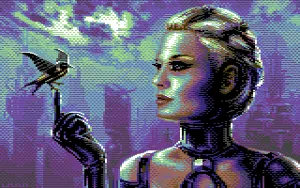
Cyberbirdby LMan, featuring Sunflower
You decided to publish the album in other formats, too, namely on vinyl and as a C64 cartridge. What additional challenges did that pose to you and to the team behind this album?
A cartridge is just the coolest medium on which to release something for retro computers. You just plug it into your c64 and bam! No loading times, no extra peripherals, plus you get a decorative physical product. This meant that I had to find a manufacturer, so I asked Kenz of Psytronik Software, who directed me to James Monkman of RGCD. They had all the experience, and since many backers would depend on me, I chose the most reliable hardware option with the tried and tested icomp GMOD2 cartridge platform.
In my naivety I assumed that porting the disk version to cartridge would be a piece of cake, but actually this meant extra challenges for THCM. The disk features all kinds of fancy features, like moving stuff on screen and through the border, and playing music during disk load. We are so used to seing such things by now, but the employed disk loader software is itself a technical marvel, allowing for visuals while boasting incredible loading speeds. For the cartridge however, you'd have to use so called bank switching to move data between it and the C64. This process requires the music to stop, and it would sometimes cause visual glitches. So Uwe had to reimplement certain parts of the album to create a consistent experience.
A CD version and more perks were brought up before launching the Kickstarter campaign. However I had enough experience to realise that overwhelming yourself with details can choke or kill a project, or at least massively delay it. So we stuck to the really cool media.😉
You have been involved in the C64 and SID scene basically since the beginning. Can you tell us about how it all began for you? For example, was the C64 even your first love?
Yes it was for sure. Growing up really rural, computers were a distant phenomenon I knew from telly in my early childhood, until my older brother got one for Christmas when I was 10. Like many others in the demoscene, I was instantly hooked, but since it was not my computer I often had to be content with studying the manual and writing BASIC code on paper. This changed when a neighbour kid sold his C16 for 100 DM (around 50 EUR). I pooled all my money together with a friend. We bought it, and for a while we used to hang out at his place and had fun writing programs, especially since its BASIC was superior to the C64. Eventually my brother and parents realised I could be trusted with the C64 and I got to spend more time on it.
Now the major drawback to the aforementioned living situation was that it was near impossible to find like-minded friends. Connecting to the Internet was unaffordable for us until the end of the 90s, so apart from showing stuff to my friends it was a lonesome hobby. Consequently, there was no exchange of knowledge either, so I had to rely on magazines and whatever software found its way to me via disk swapping in school, or diskmags later on.
I wrote games and little demos in BASIC, as well as Gary Kitchen's Game Maker IDE, painted GFX, sprites and charsets, designed levels, did SEUCK games, and made some rather perfunctory attempts in assembly. When I finally got my hands on a tracker-like music editor in the early 90s, I started making SIDs, but not long after I moved on to the Amiga. Only a few years later, when it finally got feasible to connect to the www, I instantly connected to the burgeoning C64 remixing scene: c64Audio.com, RKO, the c64rmx
news group. I remember a certain LaLa
was in that group as well. 😃
Haha, yes, I remember those days very well, too! 😊
According to my records, Remix64.com went public on April 17, 2001 - are my records correct? This was just a few short months after Remix.kwed.org popped into existence - why did you and Neil decide to create this site? And can you tell us about the almost symbiotic relationship between Remix64, RKO and AmigaRemix?
Yes, the date is correct! Before Remix64, the remixing scene back then was composed like this:
- RKO was beta and had succeeded
Triad mp3s
as remix repository. It enabled everyone to freely submit and distribute their own music online, a novelty back then - long before services like SoundCloud or YouTube came along. The interface was super sleek, clean and timeless; basically it has barely changed in all those years.
- c64Audio.com's early approach was quite the opposite: a colourful and slightly chaotic playground. Along with presenting the
Back In Time
CDs, it hosted many free remixes, often accompanied by screenshots and logos from the games, anecdotes and background info.
- The c64rmx news group: the social media of the 90s. In this particular group, we met people, announced, discussed, and reviewed new remix releases. This was the only place where you could get feedback as a remixer.
I wanted to create a new platform which would bring together and improve all of this: a place that would complement both RKO and C64Audio without substituing them, where folks could socialise online, vote, review, and decorate their own remixes with imagery and information.
Incidentally, at the same time Neil posted a link to a prototype of his own new website to the news group: a web magazine called remix64
. I loved the idea and loved the name, so I simply got in touch with him and asked if he would like us to join forces. His magazine, with interviews and reviews, and my interactive features were like two puzzle pieces waiting to be fit together. Luckily for all of us, he was as thrilled as me, and the rest is history.
Later on in 2003, AmigaRemix was launched by Paul Vanukoff, modelled after RKO. We incorporated it into the Remix64 system from the start.
During these pioneering days, I had convinced our company to build our own web content management system (CMS), since we were unhappy with the cumbersome and complicated user interfaces of existing solutions like Typo3. I figured that implementing Remix64 would be perfect for prototyping the CMS. By now (2020), we have hundreds of happy customers using the system.
I also asked the other co-founder of Remix64, Neil Carr (Tas), the same question and here's his reflection on the origins of the site.
It was sometime late 2000 when I first discovered the Internet. It was unaffordable for me before that time. I recall first logging in, not knowing what to expect. When the search engine popped up my initial reaction was that it was just some sort of web style newspaper and nearly logged out as that didn’t interest me. After several minutes of staring blankly at the screen I thought Oh! Maybe try c64 music
. I wasn’t expecting a result at all but up popped loads of information on the subject. That sparked my interest. The first website I ever clicked on was Chris Abbott’s C64 Audio.com. There were loads and loads of remixes I could download and so I did. I was amazed at what I was hearing. I felt like a child at Christmas.
I began investigating other sites, the emerging RKO and the Yahoo C64 news group amongst a few other sites. I found the whole experience a bit clunky, difficult and chaotic and on my 56k dial-up modem, time consuming. So, if I was getting frustrated by this surely others would be too. So, I had an idea. Why not create a website that did all the running around for you. If I started reviewing these remixes visitors could come to the website and read the reviews and decide upon that what to download and what might not be worth waiting 10/15 minutes for.
The idea was all good and well but I had no idea how to make a website or even what HTML was. So, I started toying around, researching, and began learning rudimentary HTML and Remix64 was born. Once I got a basic website going I contacted Chris Abbott as I’d started reviewing his work first. I got the idea at this time that I could expand the idea and develop a webzine. I asked Chris for an interview and then asked a few others. After a while Chris suggested to me that It would be an idea for other fans to submit their reviews to my website. I thought it was a good idea but I had no idea how to do that, I was still new to HTML. So, off I went and did more research and developed a basic form that while wasn’t great it was functional. So, I guess Remix64 as a name started a few month earlier than than April 17th but yeah as it is the date is right.
Out of the blue I got an E-mail from Markus suggesting we’d link websites and he showed me a work in progress version of his website. When I saw his website I instantly thought Yeah, I can’t do THAT!
. Markus clearly had years of experience over me and linking to each other just wouldn’t work because I wouldn’t get it, I’d only been online for a few month. I needed more time to learn how to make websites.
Fortunately, Markus had built a CMS and I took a look at it and realised the little knowledge I had was enough to work within that CMS .So, I suggested dropping my website altogether, keeping the idea of the webzine, the name Remix64, and adopt his ideas, too. Markus agreed and after a few more months' of work it went live on the 17th April 2001.
But in a nutshell the reason why I originally created Remix64 was because the Internet was so god damn slow.
LMan, you are a highly respected musician on the scene. One of my favorite creations of yours - both from a musical and a technological standpoint - is The Tuneful Eight
, released in August, 2019. A song that is played back on no less than 8 SID chips. Can you tell us a little about the technical challenges posed by composing for 8 SID chips? And could you describe how it was all played back on 8 SID chips simultaneously?
LMan: In 2017, Steffen Goerzig aka Sokrates approached me with a onefiler demo prototype and asked me if I wanted to supply a tune for its title screen, which sounded easy enough. 😃 However, eventually he evolved the idea, and after a while he suggested to make a 4xSID track instead. Exploring the feasible technical possibilities of the time, we finally settled for a world first: 8 SIDs!
The prospect of pulling this off was indeed thrilling, so I figured creating 4 stereo SIDs would do the trick. I chose the stereo version of the SID tracker CheeseCutter
for the task, since I'm most familiar with it, and raster time was not an issue at first. The first task was to plan the instrumentation and stereo mappings, so I built a testtune with one looping pattern that employed all channels. This test thing eventually evolved into the Tuneful 8 tune, and we decided to make it a standalone project.
Since the four instances of Stereo-Cheesecutter could not be started in sync, I created a batch script that would automatically compile all four songs and render them to wavs with SidplayFP. I would load those wavs into Reason Studio to check how everything would sound together. With this workflow, some imagination was required during the acutal composition, although I had prototyped parts of the song in Reason Studio. With the finished song, Steffen came up with the idea to add the THX like build-up intro that would turn on channel after channel, visualized in the gfx EQ. That was a great addition and it turned out nicely.
Btw, during production, the technical possibilities had evolved so much, we could have easily addressed even more virtual SIDs. However the CheeseCutter player would use up too many CPU cycles, and I'd had to start the music from scratch in another editor, and I didn't really want to do that. I'd love to see someone build a custom board that would run the demo on a C64 with 8 real 8580 SIDs. 😃
Many talents were involved in making The Tuneful Eight
a reality. While Sokrates did the coding, we had Marty / Radwar who built the demo machine based on Gideon's Ultimate 64 board. Gideon upgraded his firmware, so that we could address more than 4 SIDs. We used FPGASIDs by Andreas Beermann plus the Ultimate's internal UltiSID. MarkusC64 patched a version of the Vice emulator for testing, so it would support 8 SIDs, too. Finally, the uber talented graphic artist Joe did the stunning image. It was a great team, formed out of nowhere, to create this piece of art.
So all in all everything worked out as planned, and I'm pleased my contribution did justice to this ambitious project. We've released the demo at the Evoke 2019 in Cologne, winning second place in the Alternative Platform
competition.
The Tuneful Eight, exactly as it was presented at Evoke 2019. This version runs on a modified C64 Ultimate with FPGASIDs and UltiSIDs.
The $11 Compo
was held in 2018 (the $11, of course, referring to the hex representation to trigger a triangle wave oscillator in the SID chip). You entered no less than 3 SID tunes to it, two of which were co-ops with Jeroen Tel, all of which ended up in the top 10, and my personal favorite, Skypeople
even took the top award at that compo. Something in this compo obviously tickled your creative side a lot. What was it? What makes LMan tick?
Many musicians on the SID love a tricky challenge, and I'm no exception. With Mellowhouse
I tried to do some proper house, with drums and all, only using the triangle wave. However my brother-in-arms Jeroen Tel already held a passion for triangle and sine wave-only tunes, so we colaborated on $11 Heaven
, based on a beautiful unreleased composition he had made. This was composed for four channels, so I had to use all of my skills to make it work in the SID's three channels. When that was finished and close to the deadline, he contacted me at night with a flash of inspiration, that we should do a tune based on the Skype ringtone, which is made up of triangle waves only. Again combining his skills as composer and my skills as sound engineer, we pulled it off and the tune turned out pretty cool.
You draw beautiful pictures. You make wonderful and technically challenging music. You make amazing remixes. You also run a website or two. And you are also a married man with children. I am also married, have two kids, so I am in total awe about how you can find time to be so prolific. How do you do it, Markus, what's your secret? Or did you manage to clone yourself? (Note: although it may appear that as a new member of the Remix64 team, LaLa here is just trying to suck up to his new boss with this fawning question, but In reality, that's exactly what he is doing here.)
LOL! Yeah killer clones, pew pew!!
Alas the solution to that mystery is way less spectacular: you can only do one thing at a time. In a period of doing music, I don't have time for drawing and vice versa. And you'd be surprised about how much you can achieve in the evening hours if you do something creative instead of watching TV or gaming. Most of my creative work happens at night. Having a supportive, encouraging and understanding family also helps a lot!
I think it's pretty obvious from his answers that LMan is very passionate about the C64, and about SID music in general, and I think I speak for every fan on this site when I thank him for all the contributions he's made to the scene, and I hope he'll continue to nurture Remix64 for us! As it turned out, it's not exactly an easy endeavor to extracts words from this guy who apparently prefers to express himself with graphics and music instead, so a special thanks to him for taking the time to answer my questions, and especially because he answered them with such insightful technical details. Let's hope he'll keep pushing the technical boundaries for many-many years to come!
SID Chip Club is available for purchase in LMan's online shop.



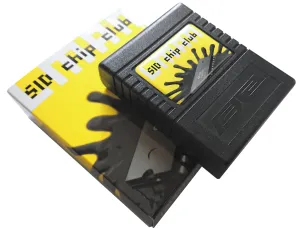
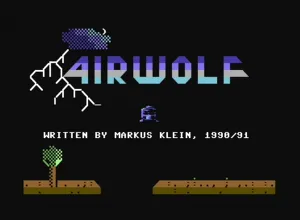
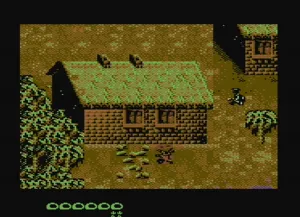
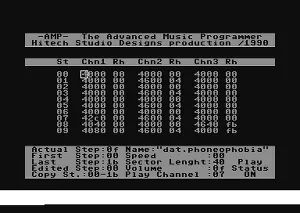
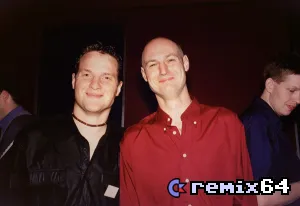
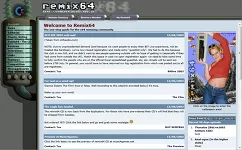
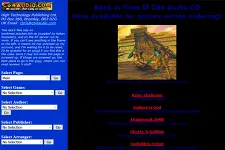
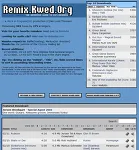
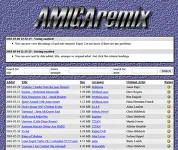
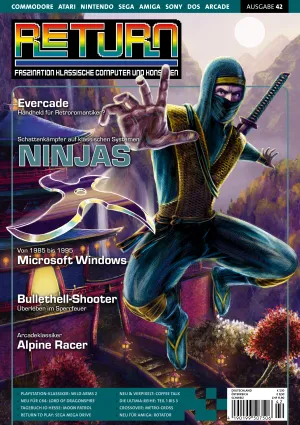










Comments